Stock Increment Strategy: Mastering Different Ways of BigCommerce Product Import

Imagine you’re faced with the task of updating your current product catalog in BigCommerce. The question is, how do you want to handle this update? While BigCommerce itself might not offer extensive flexibility in this regard, the steps in to grant you control over how you manage the product quantity data.
Do you want to completely replace the existing stock information with the new values, or perhaps, merge the new data with the old? In this comprehensive article, we are going to demystify the process of implementing different stock increment strategies for importing products into BigCommerce. You’ll not only discover how to import products while replacing the existing stock data, but we’ll also guide you through the steps to perform a BigCommerce product import that increments the existing stock count by the provided quantity.
This way, you’ll have a clear understanding of how to update your inventory effectively based on your specific needs. Plus, don’t miss out on the additional valuable insights waiting for you in our BigCommerce Cookbook.
Table of contents
BigCommerce Product Import: Stock Increment Strategy
When you harness the power of the Firebear Import & Export Tool for your importing and exporting needs, you’re not just getting a run-of-the-mill solution. This tool takes the default data transfer capabilities of BigCommerce and supercharges them with an array of additional features. One such gem is the Stock Increment Strategy toggle, tucked away neatly in the Advanced Settings section of each import profile:
- When it’s turned off: You’re essentially telling the system to replace the existing product stock with the quantity specified in your import file. For example, if your store currently has 100 items in stock, and your import file specifies an update quantity of 50, post-import, your store’s stock level will be a crisp 50.
- When it’s turned on: You’re signaling that you want to boost your existing product stock by the amount indicated in your import file. So, if your actual product quantity is 100, and your import table specifies an increase of 50, your new stock level will gleam at a grand total of 150 after the import.
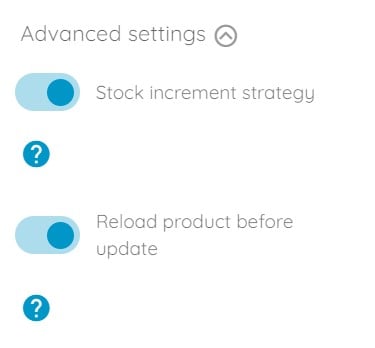
But wait, there’s more to explore here! Activating the Stock Increment Strategy toggle also unveils another switch – the Reload Product Before Update option:
- When this one’s disabled: Any changes to your product quantity will happen immediately, following the selected stock increment strategy. No fuss, no frills.
- However, when it’s enabled: The system takes a more cautious approach. It first reloads your product data to get the most up-to-date quantity information, and then, and only then, it goes ahead and applies the quantity specified in your import file.
Why is this reload feature nifty, you ask? Well, imagine a scenario where a customer orders a product from your storefront right when you’re in the midst of importing updates. You’d want to enable this option to make sure the quantity update gets applied correctly after the order is placed. With the Reload Product Before Update feature in action, your product gets reloaded to fetch its actual quantity, and then, like clockwork, the import file’s quantity is seamlessly integrated. Smooth sailing!
How to Import Products to BigCommerce With Different Stock Increment Strategies
Let’s dive into the nitty-gritty of importing products into BigCommerce using various stock increment strategies. The process is divided into a few intuitive steps:
Step 1: Create a New Import Profile
It’s a breeze to get started. Just click that trusty “New Profile” button. You’ll spot it nestled under “Apps,” then “My Apps,” and finally “Firebear Import & Export Tool,” followed by “Import.”
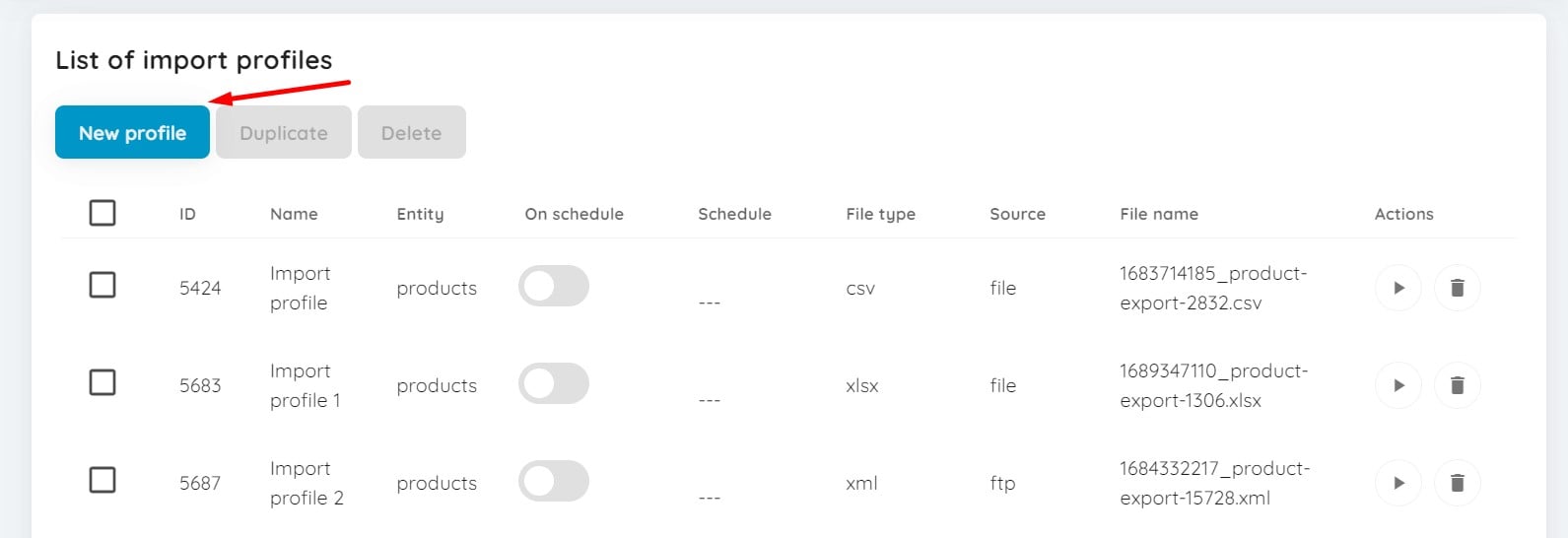
Step 2: Configure Basic Import Settings
Now, you’ll find yourself on the first screen of your brand-new import profile, titled “Select File.” Here’s your roadmap to configuring a BigCommerce import procedure and selecting the stock increment strategy that tickles your fancy:
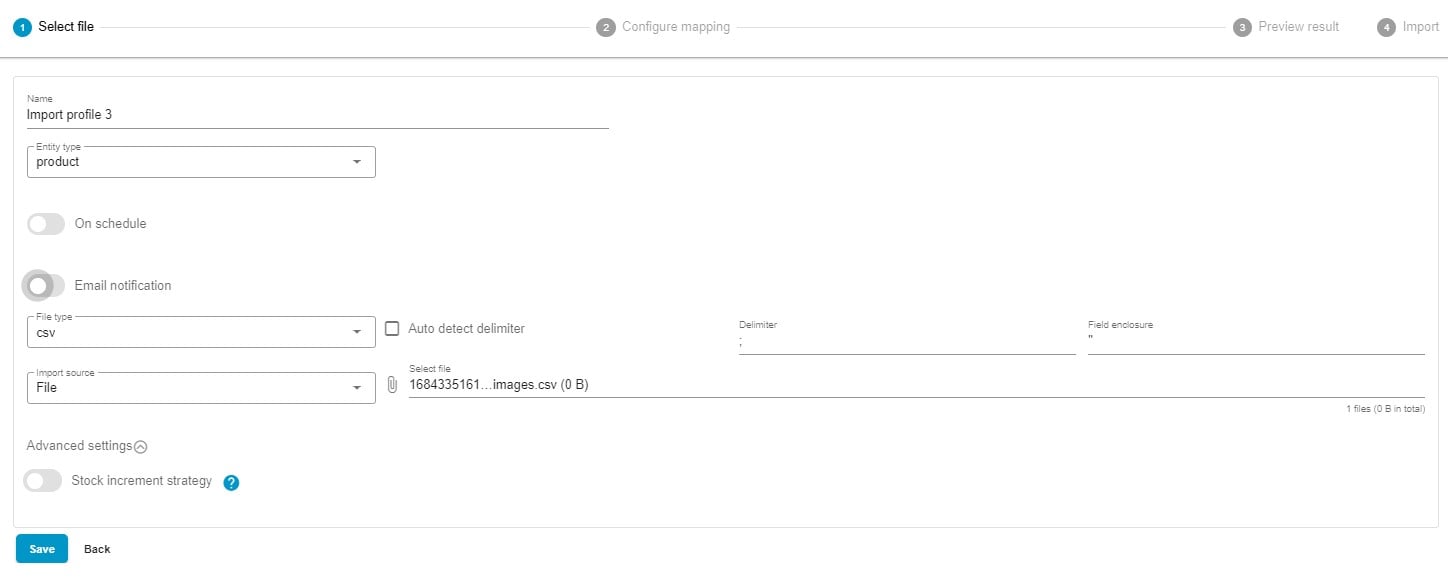
- First things first, name your profile.
- Choose the entity you want to import, such as products.
- If you need to schedule updates, go ahead and do so.
- If you’re eager to stay in the loop about import results, configure email notifications.
- Now, it’s time to pick your preferred file format. You’ve got options: XLSX, XML, CSV, or even Google Sheets.
- Select where your import source resides – it could be a file, FTP, URL, Google Sheets, or Google Drive.
- Now, here’s where the magic happens. In the “Advanced Settings,” you’ll find the Stock Increment Strategy switch. Toggle it on or off based on your needs.
- If you think it’s a fit for your case, go ahead and enable the “Reload Product Before Update” feature.

Step 3: Configure Mapping
With these basic import settings in the bag and your stock increment strategy squared away, it’s time to fine-tune your mappings. The next screen lets you specify which columns in your imported file match the properties of your products on your BigCommerce site.
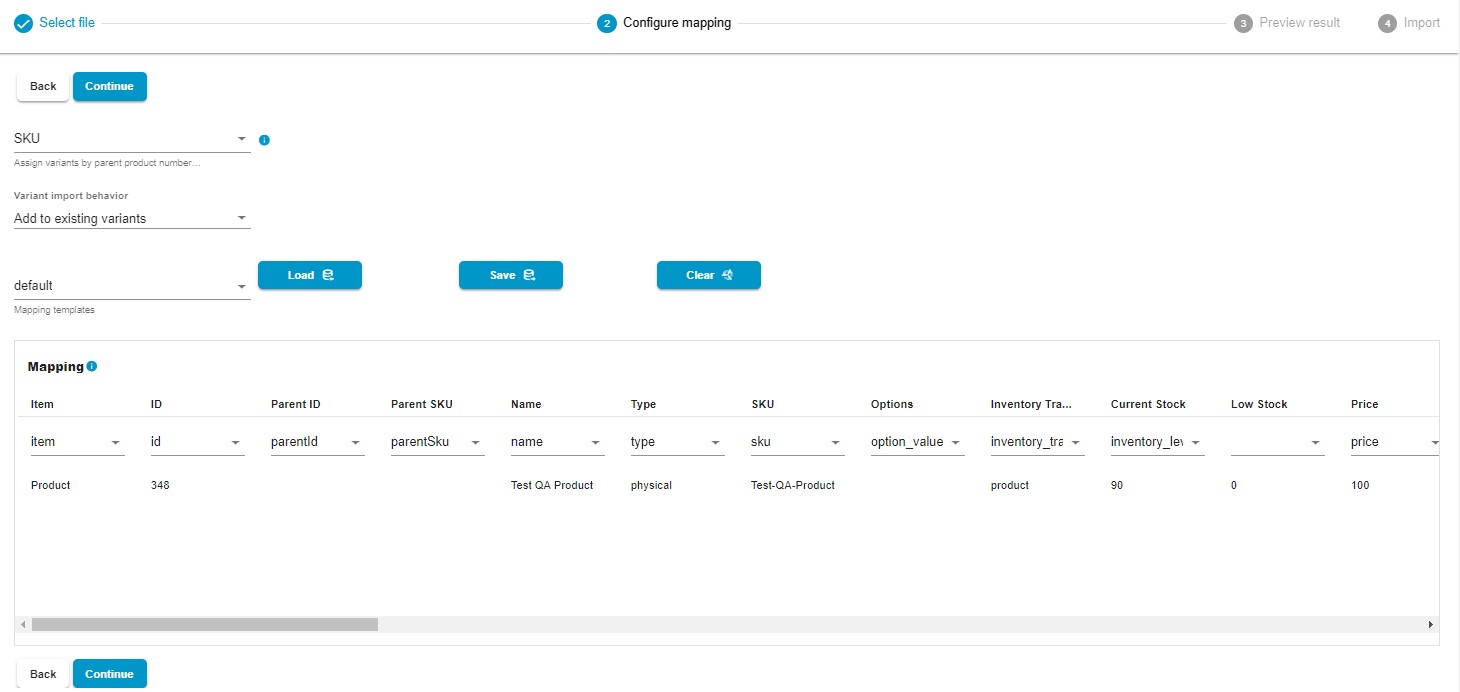
You’ll want to pinpoint which columns in your imported file match up with your product properties in BigCommerce. If the table you’re importing doesn’t quite match BigCommerce’s criteria, fear not – you can easily swap out unsupported column names with the correct ones.
Also, if your updates involve product variants, you’ve got some decisions to make. You can opt to use either the parent product’s SKU or ID for the assignment. Plus, you have the choice of either adding the new variants to your existing ones or completely replacing the old variants. It’s all about flexibility, tailored to your unique needs and how you prefer to manage your products.
Step 4: Preview Import Results
But wait, there’s more! With the Import & Export Tool for BigCommerce, you get a sneak peek of how your products will look after the import.

Step 5: Start Import
You’re all set! Fantastic! Simply click “Save” to store your new import profile. If you’ve scheduled updates, the app will take care of the import process automatically. But if you’re raring to go and want to kick things off immediately, just give that “Import” button a click.
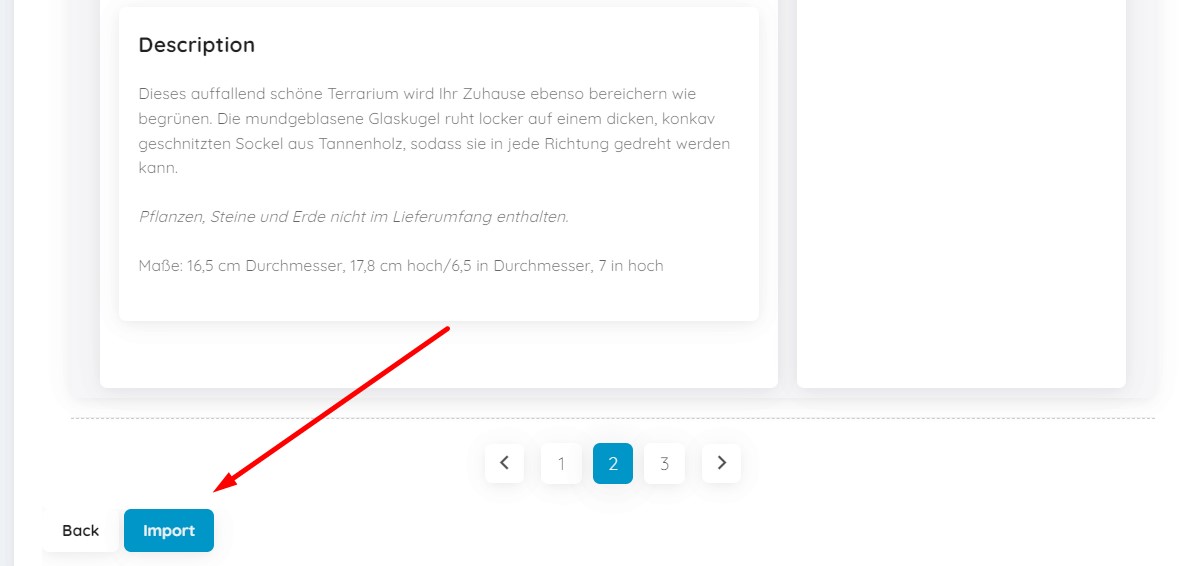
You can find more information in our Firebear Import & Export Tool for BigCommerce User Manual.
Other Features
Operating a BigCommerce store? Well, you’re in luck because the Firebear Import & Export Tool is your trusty companion. It’s not just about making importing and exporting easier; it’s about giving you tools and features that the standard BigCommerce setup simply doesn’t offer. Let’s dive into how it changes the game:
- Effortless Product Management: Keeping your product information up-to-date is a breeze. Manage product data and custom properties with ease.
- Smooth Customer Data Handling: No more juggling customer details. Importing and exporting customer info is a piece of cake, making customer relationship management a walk in the park.
- Order Insights: Exporting order data is a snap. Plus, you’ll have all the insights you need to understand transactions and sales analytics.
- Precision Data Mapping: Craft precise data connections to ensure seamless data flow between your BigCommerce store and other systems.
- Customizable Schedules: Tired of manual data updates? Customize your import and export schedules and let the tool do the heavy lifting.
- File Format Flexibility: You’re not locked into one file format. This tool plays well with different formats like CSV, XML, and XLSX, making data transitions silky smooth.
- Google Sheets Collaboration: Collaborative data management is a breeze with the integration between BigCommerce and Google Sheets. Sharing and working together on data has never been easier.
- Effortless File Uploads: Ditch the complications. Importing and exporting data is as straightforward as direct file uploads, making your data management hassle-free.
- Enhanced Security: Worried about data security? You’re covered. The tool supports secure FTP/SFTP protocols for extra peace of mind during data transfers.
- Google Drive Integration: Google Drive integration adds a layer of convenience and accessibility to the process.
As you can see, the Firebear Import & Export Tool transforms the way BigCommerce store owners handle their data transfer operations. Whether it’s keeping your product catalog in tip-top shape, managing customer data, or handling orders, this app simplifies complex tasks, ultimately supercharging your online store’s efficiency. Ready to learn more? Dive deeper into this fantastic tool by visiting:
